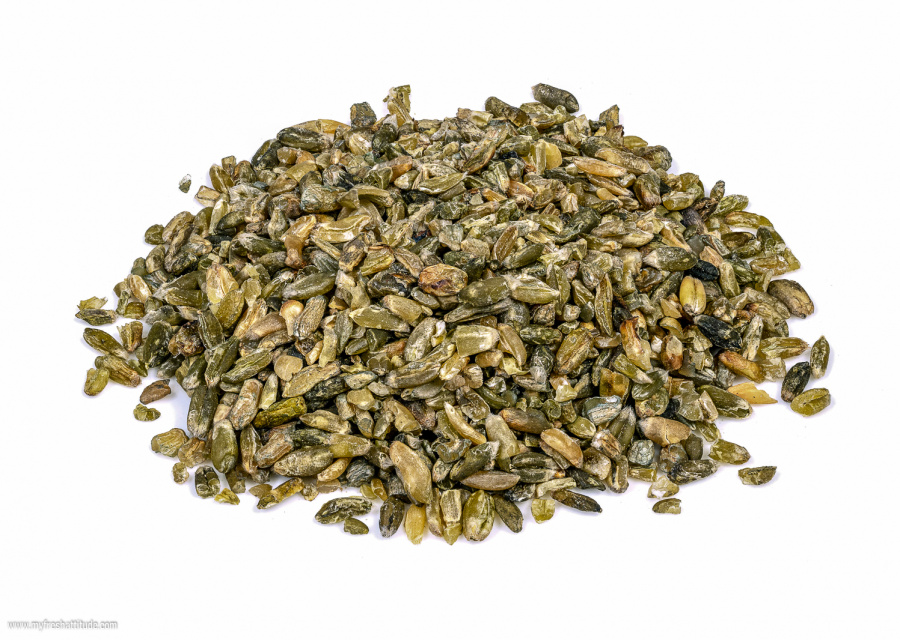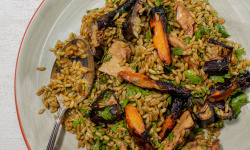
Freekeh
I’m one of those people who can’t resist an interesting culinary tradition – especially if it involves the Mediterranean and centuries of history. Freekeh falls into this category.
Freekeh (pronounced free-kah, and sometimes spelled frikeh) is also known as green wheat (a misleading characterization because the two grains are processed differently). Authentic freekeh is a very popular grain used in Middle Eastern, Turkish and North African cooking. It became popularized in modern Mediterranean cooking about 10 years ago by the celebrity chef Yotam Ottolenghi.
But he’s not the only modern writer to discover and write about this grain. Paula Wolfert wrote about Freekeh in her Mediterranean Grains and Greens book. Wolfert writes, “In Turkey and the Middle East, when the stores of winter wheat have been used up, farmers gather immature wheat and set it afire for quick consumption. They burn the chaff but preserve the moist kernels, and the result is a delicious, earthy and unique food product.”
Writings of cooks using this technique to get to the grain of immature wheat can be traced as far back as 13th Century Baghdad. And for purposes of distinction, green wheat is simply immature wheat without the processing to create the interesting smoky flavor. They are, however, interchangeable in recipes.
Purchasing Freekeh: Look to specialty stores carrying products from the Middle East or Turkey. Of course, you can also purchase freekeh relatively easy from an online provider in your area. Amazon is a good place to begin your search.
Storage: Keep green wheat or freekeh in a cool, dark location. For best results, store in your freezer to maintain a high nutritional value. There is no need to defrost the grain before using it if you are keeping it in your freezer.
Cooking: Freekeh is consider a medium grain, meaning it will cook in about 20-25 minutes. To prepare freekeh, rinse and soak in cold water for 5 minutes, then rinse well and drain. Bring a pot of water to a boil, using about twice as much water as grain. Lightly salt the water, then add the grain. Cover the pot and reduce the temperature to medium-low. Maintain a very gentle simmer for 20-25 minutes. When cooked, the grain should be chewy, but not crunchy in a way. Drain off any unwanted liquid if you want and enjoy, or cool completely to room temperature. Keep cooked freekeh refrigerated in a covered container for no more than 3 days.
Serving Suggestions: Use freekeh in soups or stews, as a summer grain salad or as a pilaf side dish mixed with plenty of vegetables and fresh herbs.
Nutritional Value: Freekeh is very high in dietary protein – about twice the amount of quinoa. It also has high amounts of dietary fiber, rich in B vitamins and plenty of minerals.
Recipes with Freekeh

There are no comments